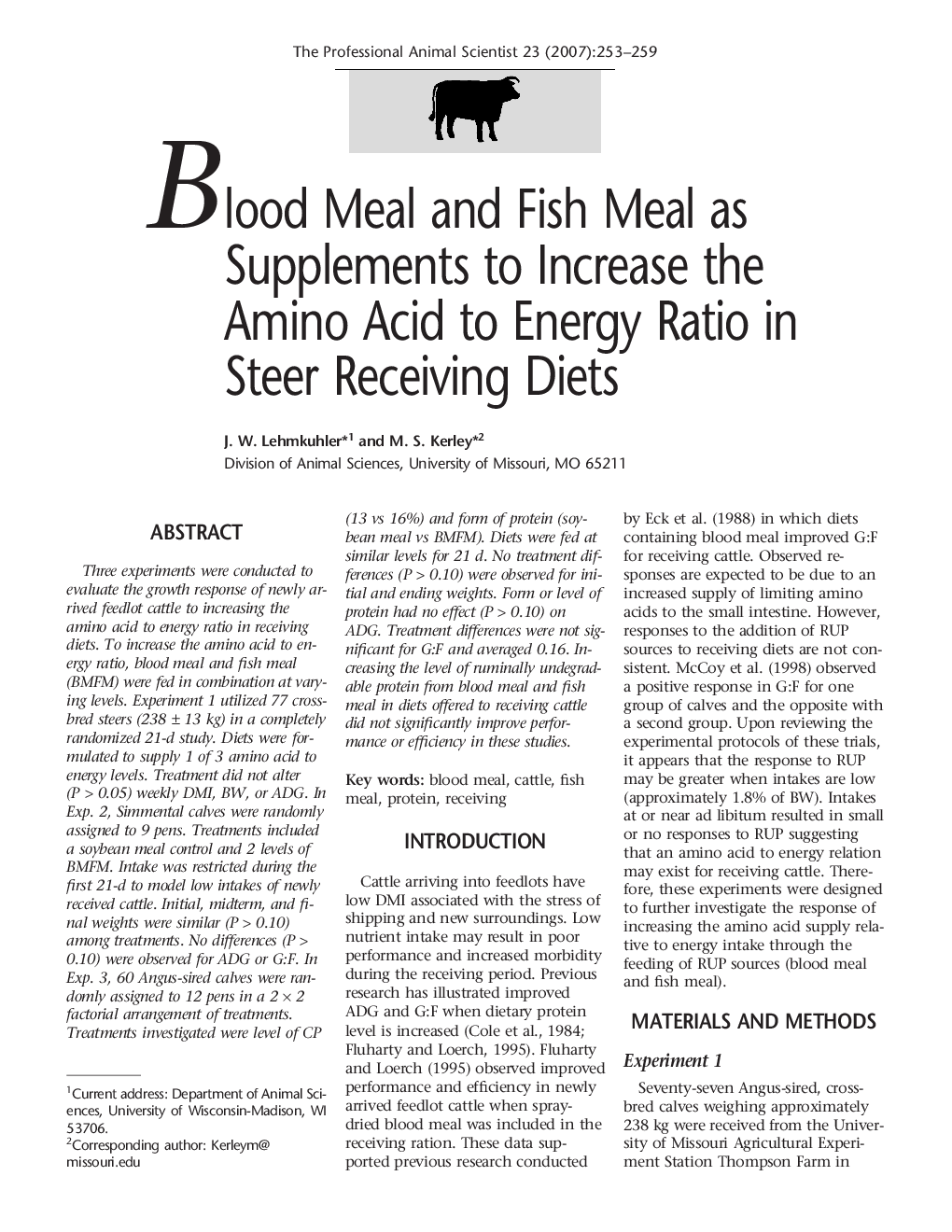| Article ID | Journal | Published Year | Pages | File Type |
|---|---|---|---|---|
| 2454286 | The Professional Animal Scientist | 2007 | 7 Pages |
Abstract
Three experiments were conducted toevaluate the growth response of newly arrived feedlot cattle to increasing the amino acid to energy ratio in receiving diets. To increase the amino acid to energy ratio, blood meal and fish meal (BMFM) were fed in combination at varying levels. Experiment 1 utilized 77 crossbred steers (238 ± 13 kg) in a completely randomized 21-d study. Diets were formulated to supply 1 of 3 amino acid to energy levels. Treatment did not alter (P > 0.05) weekly DMI, BW, or ADG. In Exp. 2, Simmental calves were randomly assigned to 9 pens. Treatments included a soybean meal control and 2 levels of BMFM. Intake was restricted during the first 21-d to model low intakes of newly received cattle. Initial, midterm, and final weights were similar (P > 0.10) among treatments. No differences (P > 0.10) were observed for ADG or G:F. In Exp. 3, 60 Angus-sired calves were randomly assigned to 12 pens in a 2 à 2 factorial arrangement of treatments. Treatments investigated were level of CP (13 vs 16%) and form of protein (soybean meal vs BMFM). Diets were fed at similar levels for 21 d. No treatment differences (P > 0.10) were observed for initial and ending weights. Form or level of protein had no effect (P > 0.10) on ADG. Treatment differences were not significant for G:F and averaged 0.16. Increasing the level of ruminally undegradable protein from blood meal and fish meal in diets offered to receiving cattle did not significantly improve performance or efficiency in these studies.
Related Topics
Life Sciences
Agricultural and Biological Sciences
Animal Science and Zoology
Authors
J.W. Lehmkuhler, M.S. Kerley,
